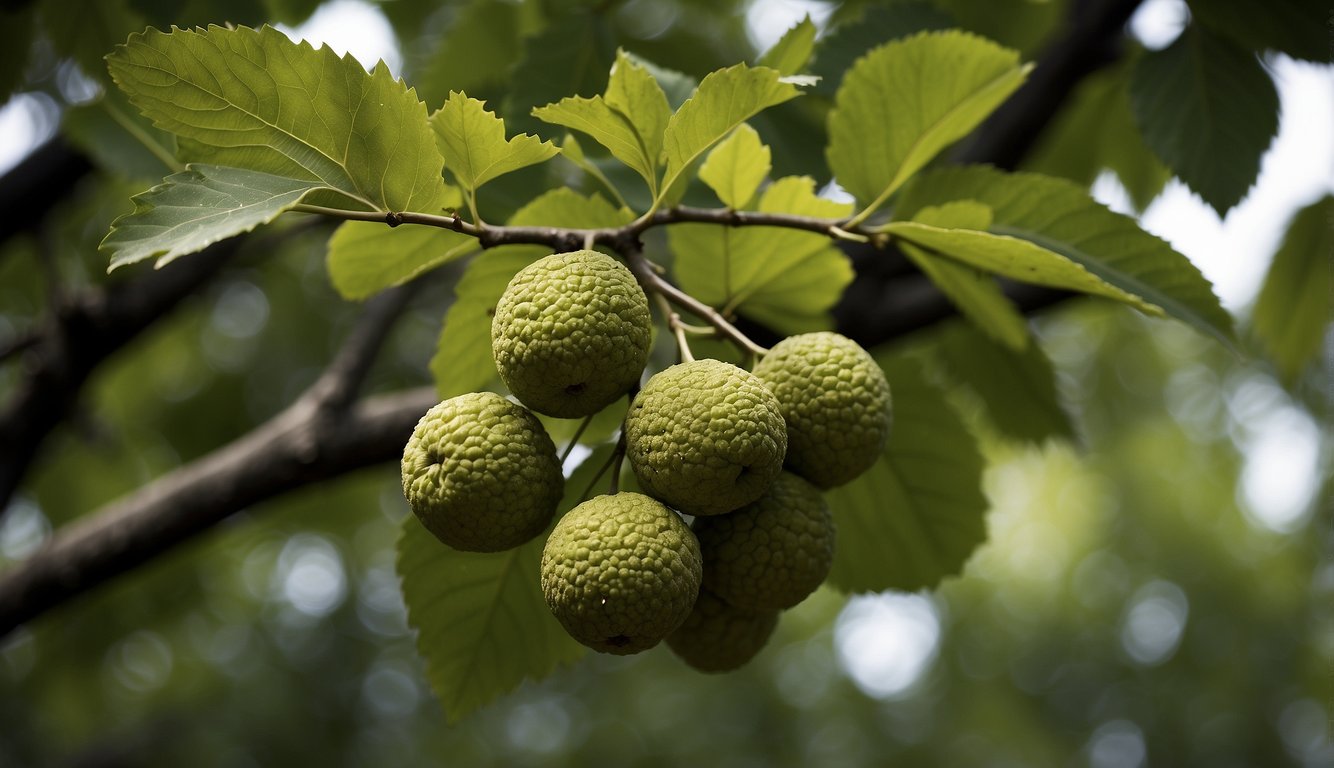TheHerbProf.com is a treasure trove of knowledge for those interested in natural healing and herbal remedies. The website is run by Paul Johnston MD. A naturopathic who has not only received extensive education in the field but also has personal experience in self-healing.
Black walnut, scientifically known as Juglans nigra, is a deciduous tree that belongs to the walnut family, Juglandaceae. The tree is native to North America and is found mostly in riparian zones, from southern Ontario to central Texas. It is a valuable and attractive forest tree that is known for its fine straight-grained wood, making it a popular choice for solid furniture and gunstocks.
The black walnut tree is a slow-growing tree that can reach up to 100 feet tall and 50 feet wide. It has a large, spreading crown that provides ample shade during hot summers. The tree produces edible nuts that are enclosed in a hard, thick shell. The nuts are used in a variety of culinary applications, including baking, cooking, and snacking.
Black walnut trees are also known for their medicinal properties. The bark, leaves, and nuts of the tree have been used for centuries to treat a variety of ailments, including fever, headache, diarrhea, and constipation. The tree is also believed to have anti-inflammatory and anti-cancer properties, making it a popular choice for natural health remedies. Despite its many benefits, the black walnut tree can be toxic to some plants, so it is important to plant it away from other plants that may be sensitive to its toxins.
Botanical Classification – Get Your Black Walnut Juglans Nigra Here!
Family and Genus
Black walnut (Juglans nigra) belongs to the Juglandaceae family, which includes around 60 species of deciduous trees. The family is characterized by the presence of compound leaves, with each leaflet having a pointed tip. The leaves are alternately arranged on the stem, and the trees produce nuts that are enclosed in a hard, woody shell.
The genus Juglans, to which black walnut belongs, is distributed throughout the Northern Hemisphere. It includes around 21 species of trees that are valued for their timber and nuts. The name “Juglans” is derived from the Latin words “Jovis glans,” meaning “nut of Jupiter,” which reflects the ancient belief that the tree was a gift from the gods.
Species Characteristics
Black walnut (Juglans nigra) is a large deciduous tree that can grow up to 100 feet tall and 50 feet wide. It has a straight trunk with a broad, spreading crown. The bark of the tree is dark gray-black and deeply furrowed, forming diamond patterns. The leaves are compound, with each leaflet being 2-4 inches long and 1-2 inches wide. They are dark green and glossy on the upper surface and pale green on the lower surface.
The male flowers of the black walnut tree are small and inconspicuous, while the female flowers are larger and develop into nuts that are enclosed in a thick, hard shell. The nuts are round or oblong in shape and have a rich, buttery flavor. They are a valuable food source for wildlife, including squirrels, deer, and birds.
Overall, the Juglans nigra is a beautiful and valuable tree that is highly sought after for its timber and nuts. Its botanical classification within the Juglandaceae family and Juglans genus highlights its close relationship with other species of trees that share similar characteristics.
Physical Description – Get Your Black Walnut Juglans Nigra Here!
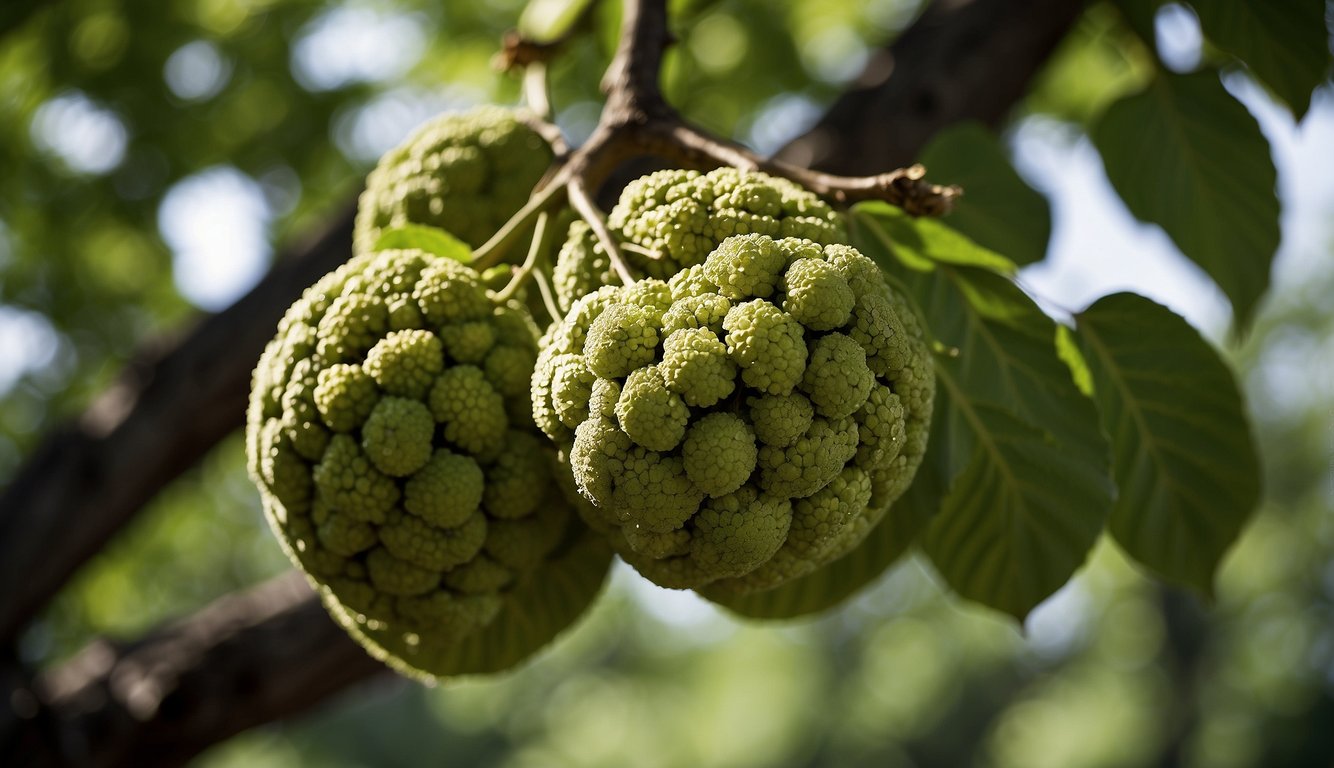
As a botanist, I find the physical description of Juglans nigra, commonly known as black walnut, quite fascinating. This deciduous tree belongs to the walnut family, Juglandaceae, and is native to North America. Here, I will discuss the tree structure, foliage details, and fruit and seed characteristics of this magnificent tree.
Tree Structure
Black walnut trees are tall and can reach a height of over 100 feet for a mature tree. The trunk is usually long and devoid of branches on mature trees. The bark is dark gray-black, fissured, and sharply ridged, forming attractive diamond patterns. The branches can spread up to 50 feet in diameter, and the taproot can extend up to 10 feet deep into the soil.
Foliage Details
The foliage of black walnut trees consists of large, odd-pinnate compound leaves that can grow up to 24 inches in length. The leaves are composed of 15 to 25 oppositely-arranged leaflets, each of which is serrated and may be up to 5 inches long. The foliage turns yellow in the fall before shedding.
Fruit and Seed Characteristics – Get Your Black Walnut Juglans Nigra Here!
Black walnut trees are monoecious, meaning they have separate male and female flowers on the same tree. The male flowers are catkins that appear in the spring and are 3 to 4 inches long. The female flowers are small and green and appear in clusters of two to five in the spring. The fruit of the black walnut tree is a large, green, tennis ball-shaped husk that encloses a hard-shelled nut. The husk turns brown and falls from the tree in the fall, revealing the nut inside. The nut has a pithy outer layer and a hard inner shell that contains the edible kernel.
Overall, the physical description of Juglans nigra is impressive, and the tree is a valuable and attractive forest tree.
Habitat and Distribution
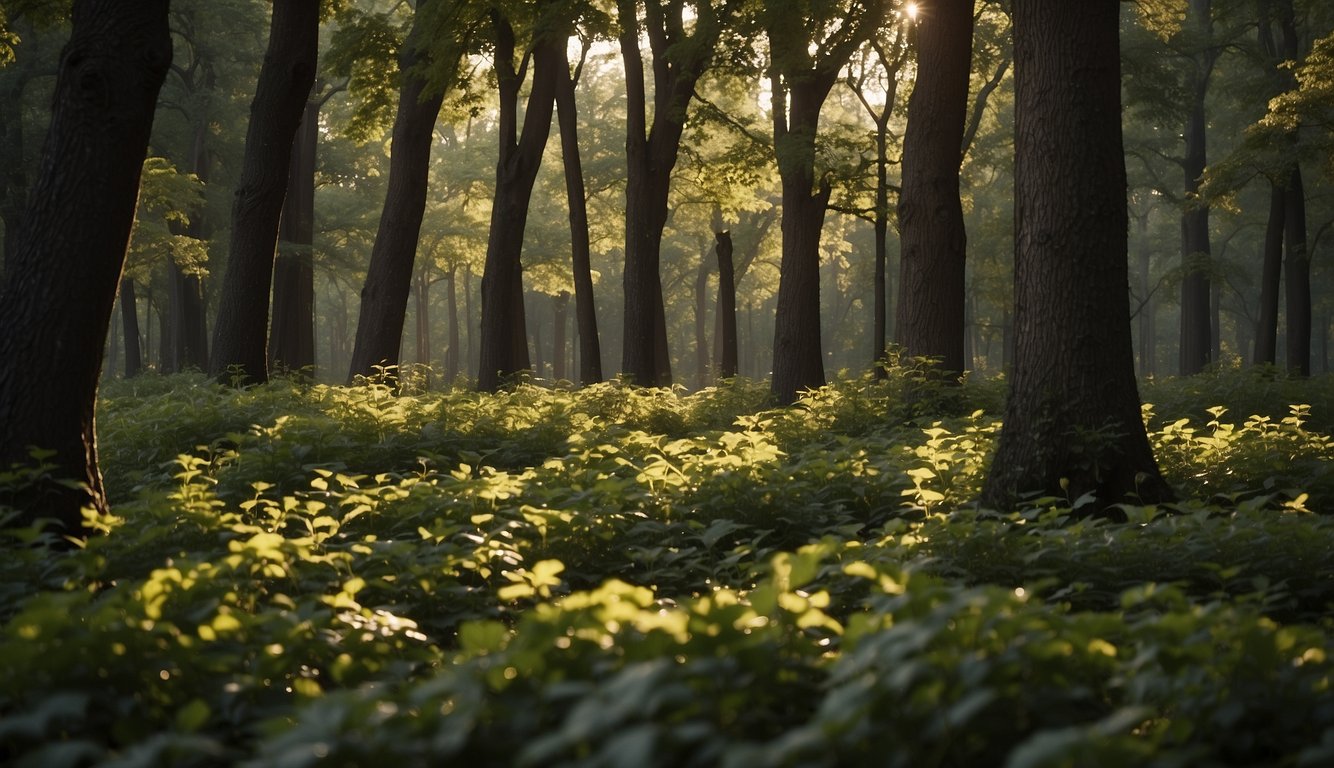
Native Range
Black walnut, or Juglans nigra, is a native plant to North America and is found in the eastern United States, particularly in the Midwest, Northeast, and Southeast regions. Its natural range extends from Minnesota and Michigan in the north to South Dakota, Iowa, and Illinois in the west, and all the way to New York, North Carolina, and Florida in the east.
Growth Regions – Get Your Black Walnut Juglans Nigra Here!
Black walnut prefers to grow in deep, well-drained soils, and is commonly found in floodplains, riverbanks, and other moist locations. It is a forest tree that grows best in mixed stands, but can also be found in pure stands. Black walnut is commonly grown in the United States for its valuable wood and edible nuts, and is often found in orchards and agroforestry systems.
Black walnut is also known to occur in Texas and Georgia, as well as in other parts of the Southwest. However, it is not as common in these areas as it is in the eastern United States.
Black walnut is a native plant to North America and is commonly found in the eastern United States, particularly in the Midwest, Northeast, and Southeast regions. It grows best in deep, well-drained soils, and is commonly found in floodplains, riverbanks, and other moist locations.
Cultivation and Uses – Get Your Black Walnut Juglans Nigra Here!
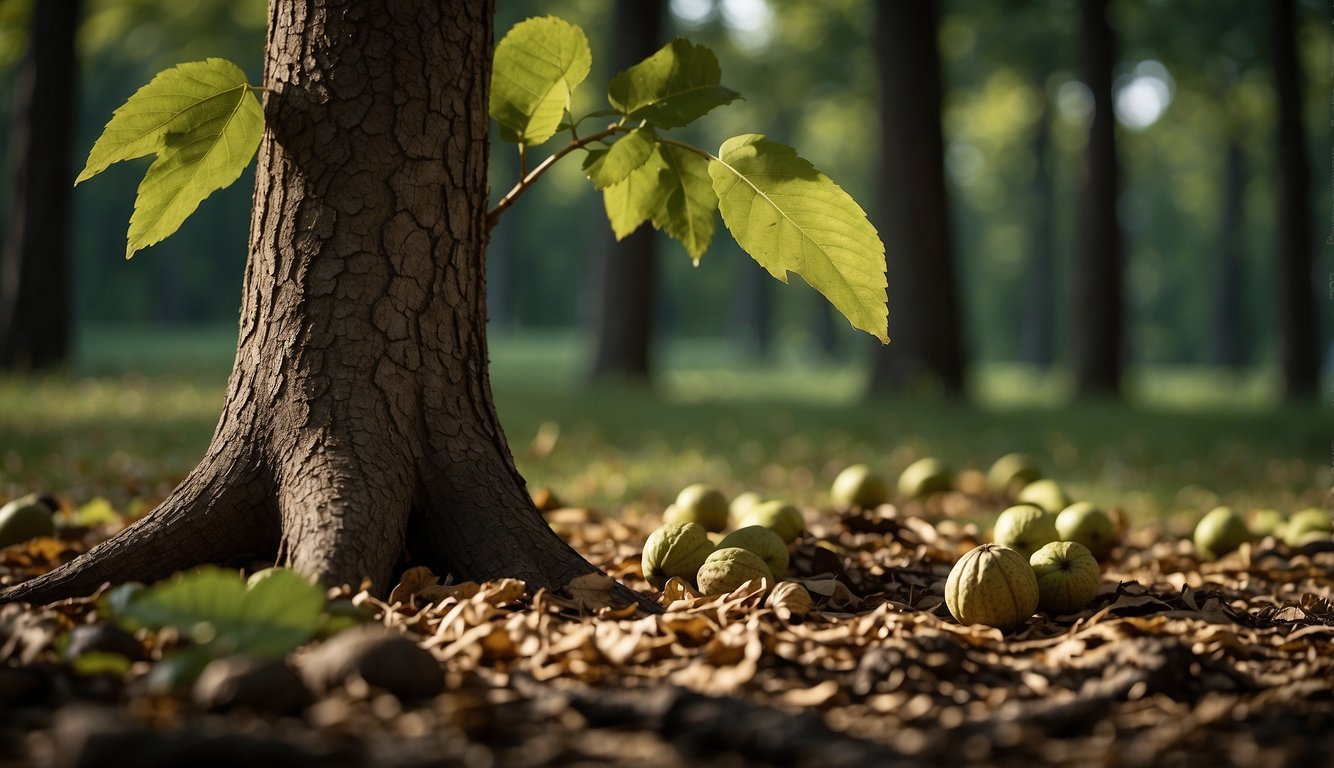
As an avid gardener, I have found that Juglans nigra, commonly known as black walnut, is a versatile and valuable tree that can provide both ecological and economic benefits. Here are some key points to keep in mind when cultivating and using black walnut.
Soil and Light Requirements
Black walnut trees prefer well-drained soil and full sun. They can grow in a variety of soil types, including loam, but they do best in deep, fertile, and well-drained soil. The trees are also tolerant of alkaline soils, which makes them suitable for a wide range of growing conditions.
Commercial and Domestic Use – Get Your Black Walnut Juglans Nigra Here!
The black walnut tree is a member of the walnut family and is highly valued for its hardwood, which is used in furniture making, veneer production, and gunstock crafting. The wood is prized for its strength and dark, attractive color. Eastern black walnut is one of the most popular cultivars for lumber production due to its high-quality wood.
Culinary Applications
Black walnuts are also known for their edible nuts, which have a rich, nutty flavor and are high in tannins. They are commonly used in pies, ice cream, and other baked goods. The fruits and husks can also be used to make a natural dye.
When cultivating black walnut, it’s important to keep in mind that the nuts need to be stratified before planting to ensure proper germination. The trees are hardy and can tolerate a wide range of temperatures, but they do best in areas with a long growing season.
Overall, Juglans nigra is a valuable and versatile tree that can provide a range of ecological and economic benefits. With proper cultivation and care, black walnut can be a valuable addition to any garden or landscape.
Interactions with Other Species – Get Your Black Walnut Juglans Nigra Here!

Beneficial Relationships
Black walnut trees produce juglone, a chemical compound that inhibits the growth of certain plants around its roots. This is known as allelopathy. However, not all plants are susceptible to juglone, and some plants can actually benefit from growing near black walnut trees. For example, carya species such as pecans and hickories can grow well in the presence of juglone. Additionally, black walnut trees can provide habitat for animals such as squirrels and birds.
Pests and Diseases – Get Your Black Walnut Juglans Nigra Here!
Black walnut trees are susceptible to a number of pests and diseases. Some common pests include aphids and fall webworms, which can defoliate trees if populations are high. Insecticides can be used to control these pests if necessary. Diseases such as canker and leaf spot can also affect black walnut trees, causing damage to the bark and leaves. These diseases can be managed through proper pruning and sanitation practices.
One of the most significant threats to black walnut trees is the spread of the fungal disease known as Thousand Cankers Disease (TCD), which is caused by the walnut twig beetle. TCD can kill trees within a few years of infection. To prevent the spread of TCD, it is important to avoid transporting firewood and other wood products from infected areas to uninfected areas.
Black walnut trees can also interact with other species in ways that are less direct. For example, research has shown that the presence of black walnut trees can affect the growth and yield of tomato plants. This is thought to be due to the allelopathic effects of juglone on the tomatoes. Additionally, black walnut trees can attract a variety of insects, some of which may be beneficial while others may be pests.
Propagation and Growth – Get Your Black Walnut Juglans Nigra Here!
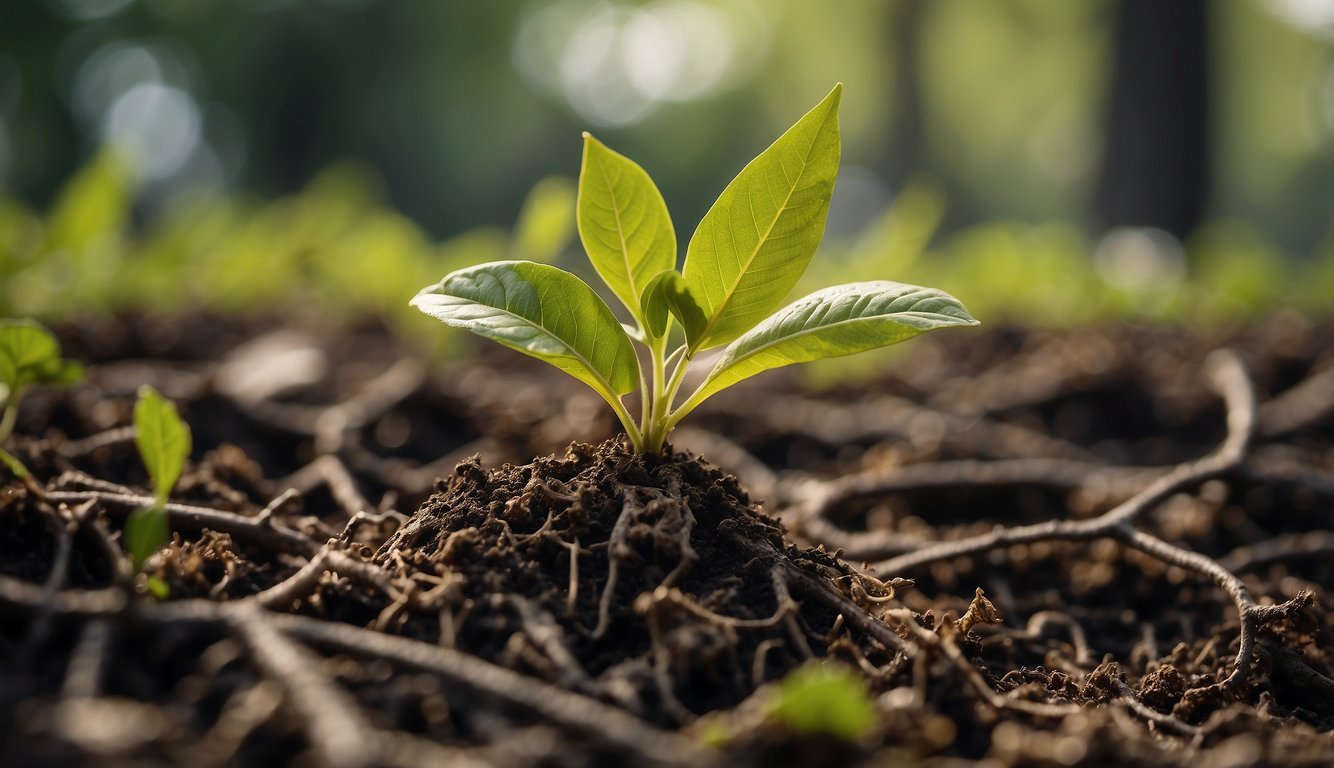
Reproduction Methods
As a black walnut (Juglans nigra) tree matures, it produces nuts that can be used for propagation. The nuts are technically drupes and can be collected in the fall after they fall to the ground. The outer layers of the fruit can be peeled away to reveal the hard seed that resembles a nut. These seeds can be planted directly in the ground or in containers. When planting, it is important to keep the pointed end of the seed facing down. It typically takes 1-2 months for the seeds to germinate.
Another method of propagation is through vegetative means. This involves taking cuttings from a mature tree and rooting them to create a new tree. The success rate of this method varies depending on the cultivar and the time of year the cutting is taken.
Growth Factors – Get Your Black Walnut Juglans Nigra Here!
Black walnut trees are typically slow-growing, averaging between 12-30 inches per year (30-70 cm) depending on the conditions. The tree prefers well-draining soils that are fertile and slightly acidic. It can tolerate slopes and is hardy in Massachusetts and other regions with similar climates.
The tree produces male and female flowers on separate parts of the tree. The male flowers are small and green, while the female flowers are larger and appear as clusters of small, green buds. The female flowers are pollinated by the male flowers, which release pollen into the air.
Overall, black walnut trees are hardy and relatively easy to propagate and grow. With proper care and maintenance, they can provide a valuable source of nuts and timber.
Conservation and Environmental Impact
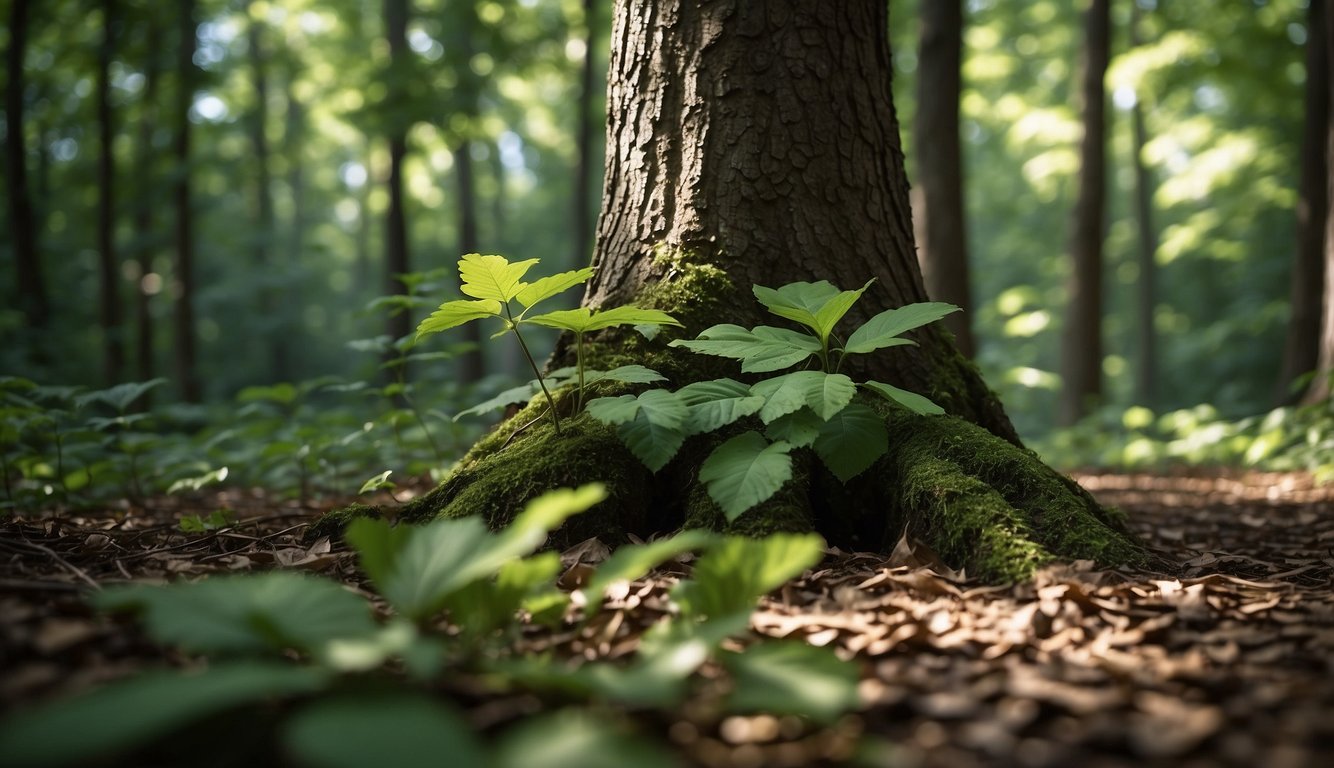
Ecological Role – Get Your Black Walnut Juglans Nigra Here!
As a native plant, black walnut (Juglans nigra) plays an important ecological role in its natural habitat. It is commonly found in moist soils along streams, floodplains, and other wetland areas. Black walnut is a tall forest tree that can grow up to 40 meters in height. Its foliage provides a good source of food and habitat for wildlife, including birds, squirrels, and deer. It also produces a natural naphthoquinone called juglone, which has allelopathic effects on other plants. Juglone can inhibit the growth of some plants, making it difficult for them to compete with black walnut.
Threats and Conservation Efforts
Despite its ecological importance, black walnut is facing several threats. One of the major threats is the loss of habitat due to human activities such as deforestation and urbanization. In addition, black walnut is also susceptible to diseases such as Thousand Cankers Disease and Walnut Blight. These diseases can cause significant damage to black walnut populations.
To address these threats, several conservation efforts are being undertaken. One such effort is the establishment of protected areas where black walnut can grow and thrive. In addition, research is being conducted to develop disease-resistant black walnut cultivars. This will help to ensure the long-term survival of black walnut populations.
Black walnut is an ecologically important plant that plays a vital role in its natural habitat. However, it is facing several threats that require conservation efforts to ensure its survival. By protecting its habitat and developing disease-resistant cultivars, we can help to ensure that black walnut continues to thrive in the future.
Black Walnut Juglans Nigra and TheHerbProf.com: A Nutty Nurturing!
Black Walnut Juglans Nigra Wisdom: At TheHerbProf.com, we’re all about Black Walnut Juglans Nigra! We delve into its health-boosting properties and its role in herbal medicine.
Herbal Highlights: Learn how Black Walnut can enrich your herbal routine. It’s not just a nut; it’s a wellness wonder!
Culinary Creations: Black Walnut in the kitchen? Absolutely! We share innovative recipes that bring out the best in Black Walnut.
Health and Wellness: We’re all about health and wellness, and Black Walnut is a key part of this mission. It’s packed with compounds that promote good health.
Community Connection: Join our community of Black Walnut enthusiasts! Share your journey, learn from others, and make some new friends.
So, whether you’re a Black Walnut whiz or just starting your herbal journey, TheHerbProf.com is your trusty companion. Dive in, explore, and stay healthy!
References:
Little Herb Encyclopedia, by Jack Ritchason; N.D., Woodland Publishing Incorporated, 1995
The Ultimate Healing System, Course Manual, Copyright 1985, Don Lepore
Planetary Herbology, Michael Tierra, C.A., N.D., Lotus Press, 1988
Handbook of Medicinal Herbs, by James A. Duke, Pub. CRP Second Edition 2007
The Complete Medicinal Herbal, by Penelope Ody, Published by Dorling Kindersley
Before You Go – Check the Following Articles!
Frequently Asked Questions – Black Walnut Juglans Nigra

What are the distinguishing characteristics of the black walnut tree?
The black walnut tree (Juglans nigra) is a deciduous tree that can grow up to 100 feet tall. It has a straight trunk, a broad crown, and deeply furrowed bark. The leaves are pinnately compound and can be up to 2 feet long. The nuts are round, with a thick, hard shell that is difficult to crack.
How can you differentiate black walnut wood from other types of wood?
Black walnut wood is a dark, rich brown color, with a straight grain and a fine, even texture. It is prized for its beauty and durability, and is often used for furniture, flooring, and cabinetry. One way to differentiate black walnut from other types of wood is to look for the distinctive grain patterns, which are often wavy or curly.
What are the common uses for black walnut timber?
Black walnut timber is highly valued for its strength, durability, and beauty. It is commonly used for furniture, flooring, cabinetry, and decorative woodwork. The wood is also used for gunstocks, musical instruments, and boatbuilding.
Are there any potential risks associated with black walnut toxicity to other plants or humans?
Yes, black walnut trees produce a chemical called juglone, which is toxic to many plants, including tomatoes, potatoes, peppers, and some other trees and shrubs. The toxicity is limited to the root zone of the tree, so it is generally safe to plant other types of plants at a distance from the tree. The nuts themselves are not toxic to humans, but the husks can stain clothing and skin.
What habitats are most suitable for growing black walnut trees?
Black walnut trees are native to the eastern United States and grow best in deep, well-drained soils with plenty of sunlight. They are often found in bottomlands, along streams and rivers, and in upland forests. They are tolerant of drought and can grow in a wide range of soil types, but they do not do well in wet or poorly drained soils.
How does the availability of black walnut trees compare to other walnut species?
Black walnut trees are less common than other walnut species, such as the English walnut (Juglans regia) and the Persian walnut (Juglans regia). However, they are still widely distributed throughout their native range and are an important source of timber and nuts.
